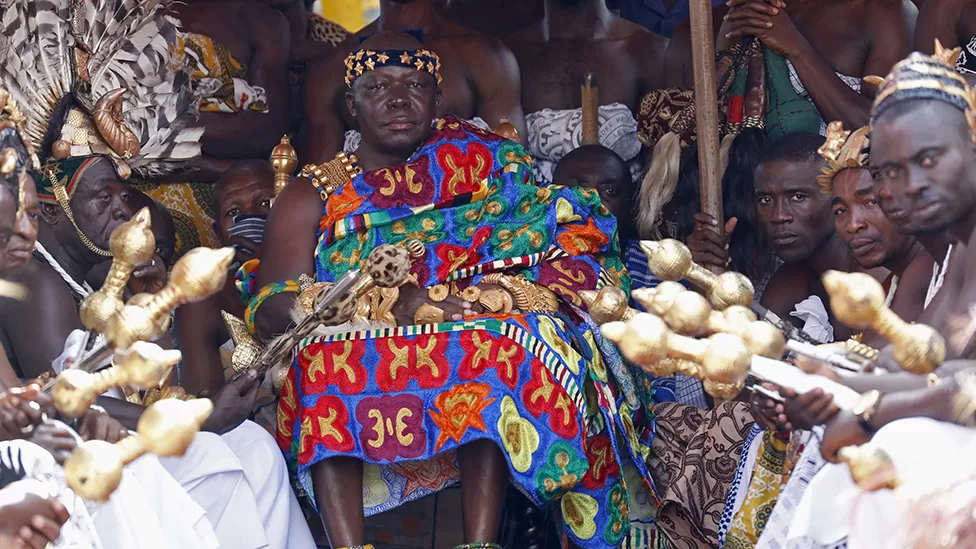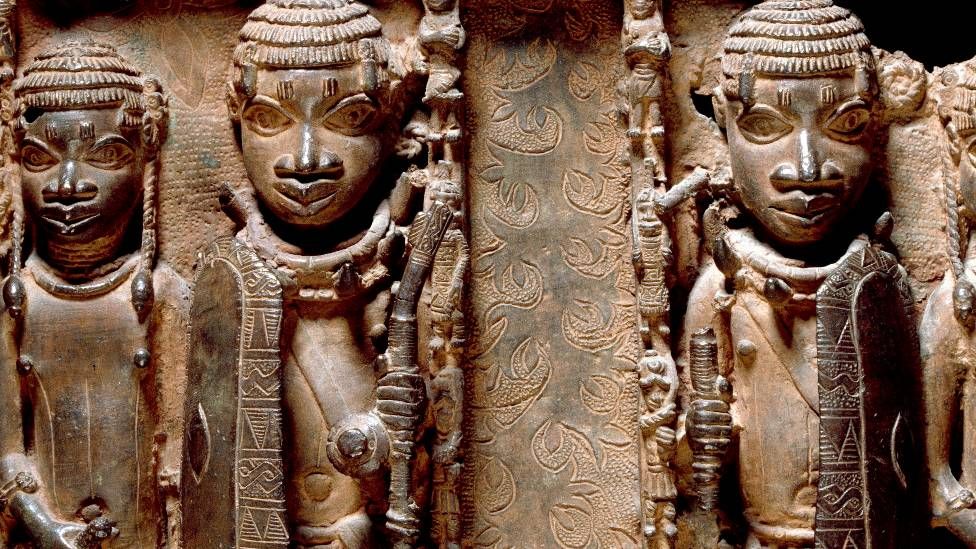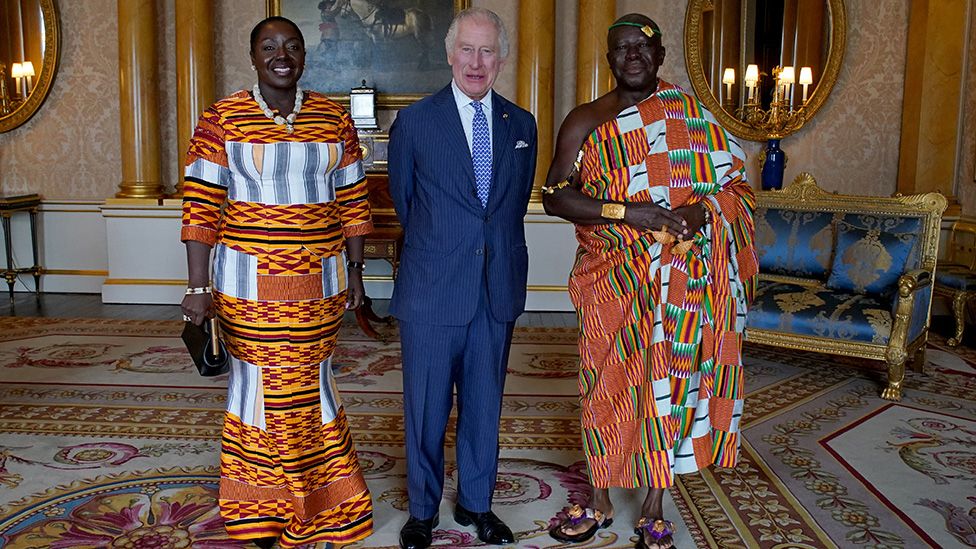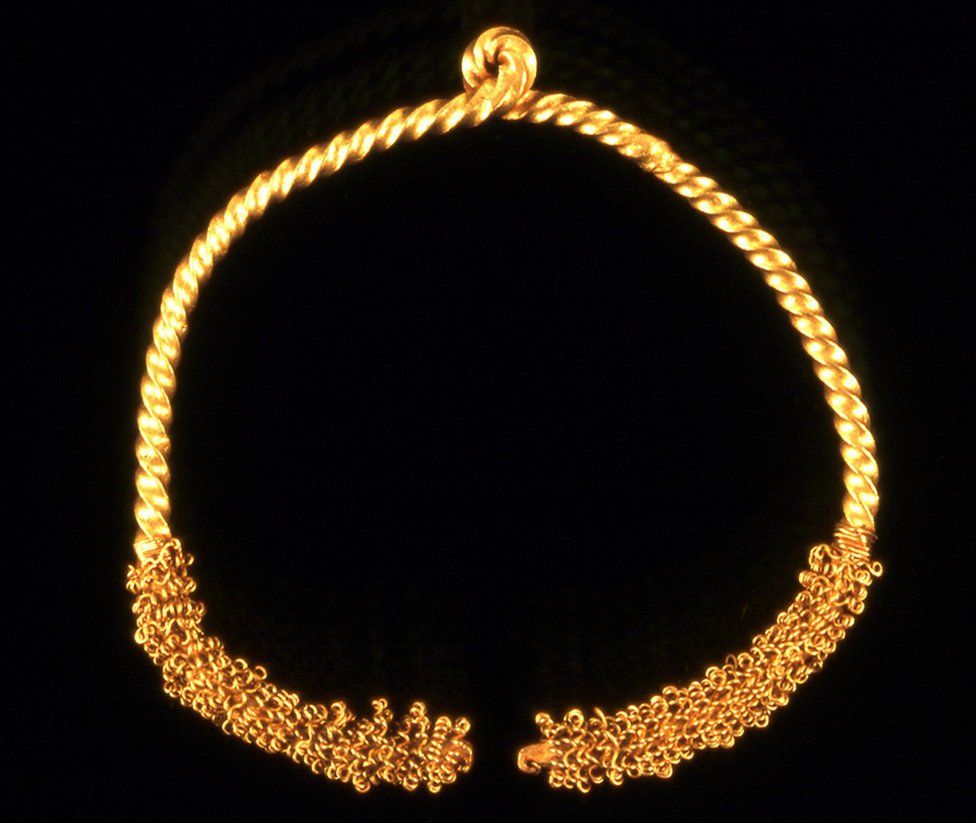The Asantehene Otumfuo Osei Tutu II has asked the British Museum to return gold items in its collection to the kingdom.
The Asantehene Otumfuo Osei Tutu II, who attended the Coronation of King Charles, later met the museum director Dr Hartwig Fischer for discussions.
The British Museum’s collection includes works taken from the Asante palace in Kumasi during the war with the British of 1874.
The British Museum has been under increasing pressure in recent years to return items in its collection to their countries of origin.

The demands by Greece for the return of the Parthenon Sculptures, often still known as the Elgin Marbles, are the most high profile example in this contested debate. They were removed by the diplomat and soldier Lord Elgin in the 19th century and later bought by the British government and placed in the British Museum.
Ethiopia wants the British Museum to return ceremonial crosses, weapons, jewellery, sacred altar tablets and other items taken from Maqdala in the north of the country during British military action in 1868.
The Nigerian Government has also formally asked the museum to return 900 Benin Bronzes.
These beautiful bronze and brass sculptures were created by specialist guilds working for the royal court of the Oba, or King, in Benin City from the 16th century onwards. Many were forcibly removed when the British captured the city in 1897.

Ghana’s government made a formal request in 1974 from the then Asantahene, requesting the return of regalia and other items taken by British forces in 1874, 1896 and 1900. Since then, the British Museum says it has worked to establish a positive and ongoing collaboration with the Asantehene and Ghana’s Manhyia Palace Museum, which chronicles Asante culture.
In recent times Ghana’s government has set up a Restitution Committee to look at the return of items taken from the Asante palace which are now in collections around the world.
She added that they are looking for a new relationship “not based on exploitation or oppression, but on equity and mutual respect”.
Last Thursday’s discussions at the British Museum are the first ever meeting between the Asantehene and the museum director, Dr Fischer.

Otumfuo Osei Tutu II requested a loan of items of regalia belonging to his forbears, acknowledging the successful ongoing collaboration with the British Museum.
There are more than 200 Asante gold objects and other regalia within the British Museum collection which were taken by British troops during the Anglo-Asante wars.
Back in the 19th century, the Asante state was one of few African states that offered serious resistance to European colonisers.
She added that the museum “is exploring the possibility of lending items from the collection to mark the 150th anniversary of the end of the third Anglo-Asante war, as well as to support celebrations for the Asantehene’s Silver Jubilee next year”.

The British Museum has not received a formal return request from Ghana since 1974.
It loans more than 5,000 objects to institutions around the world every year in its efforts to share its collection globally.
For some Ghanaians however, loans can never be a long term solution.
Oforiatta Ayim, who is also a special adviser to Ghana’s Culture Minister, said: “Loans can be a first step in that they can open up dialogue in the kind of institutions and structures that are slow to change. At the end of the day, objects like the ones taken in 1874 were taken under horrifically violent circumstances… There needs to be honesty, accountability and action”.

She added: the objects’ homes are “undeniably the places they were taken from” though could be lent back to British institutions in future.
London’s Horniman Museum returned 72 items in its collection to Nigerian ownership last year.
At the time, Nick Merriman, the Horniman Museum director, told the BBC there was a “moral argument” to return them. He said “we’re seeing a tipping point around not just restitution and repatriation, but museums acknowledging their colonial history”.
But some of the UK’s most renowned institutions, including the British Museum, are prevented by law from making a decision of this kind. The British Museum Act of 1963 bans the museum from the “disposal of objects” except in very specific circumstances.
It is however free to loan items, if it believes the items won’t be damaged




































































